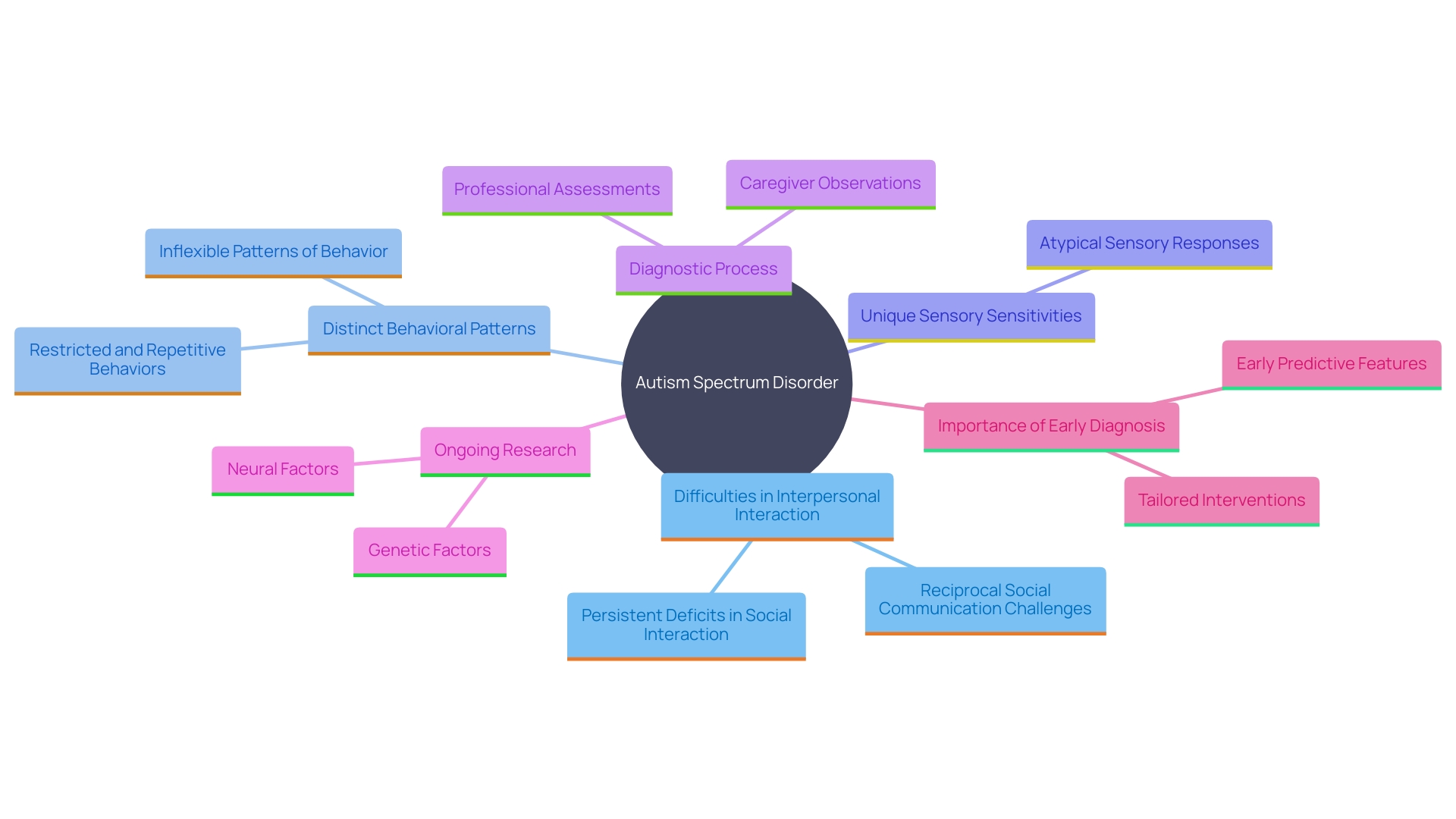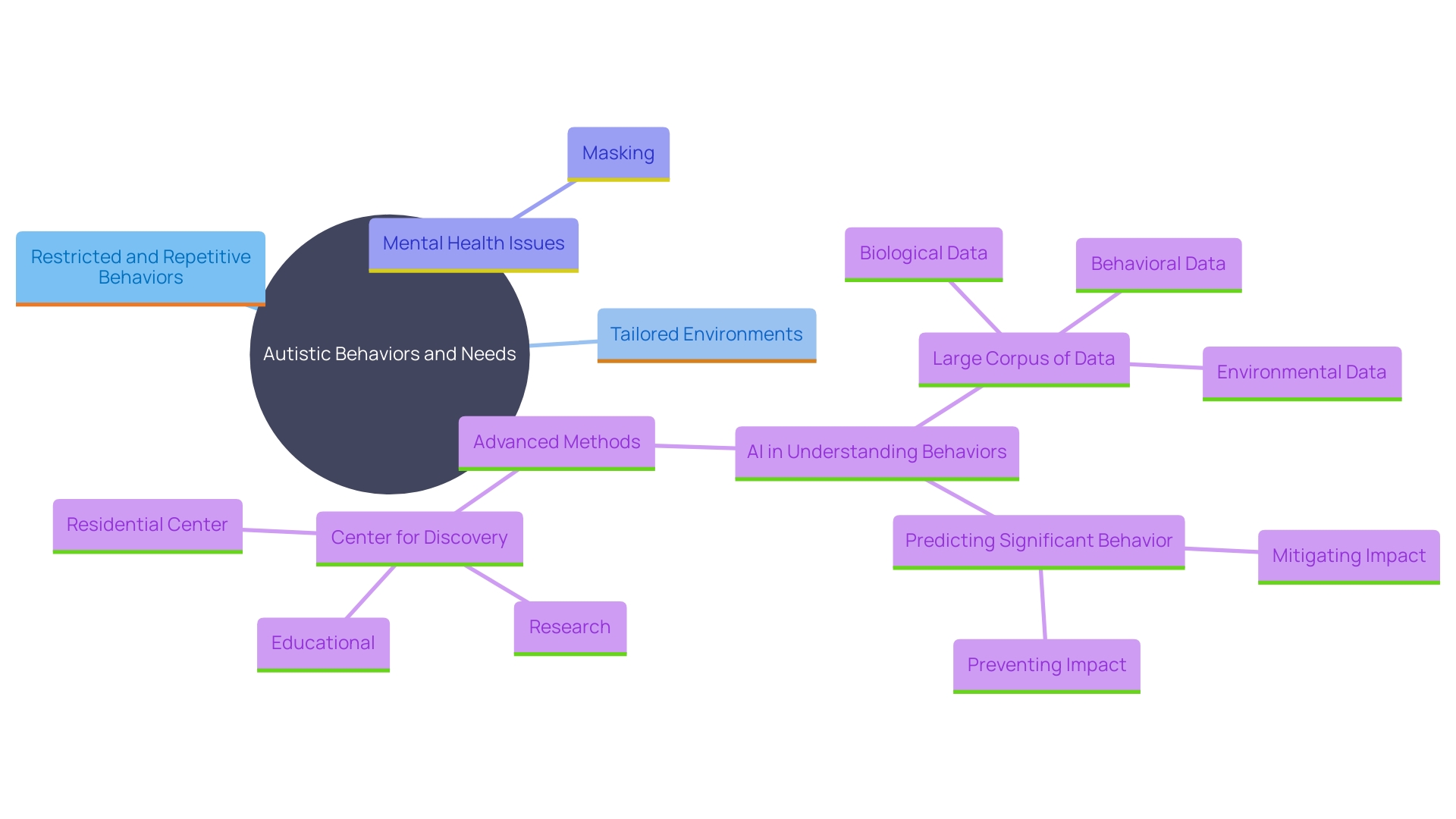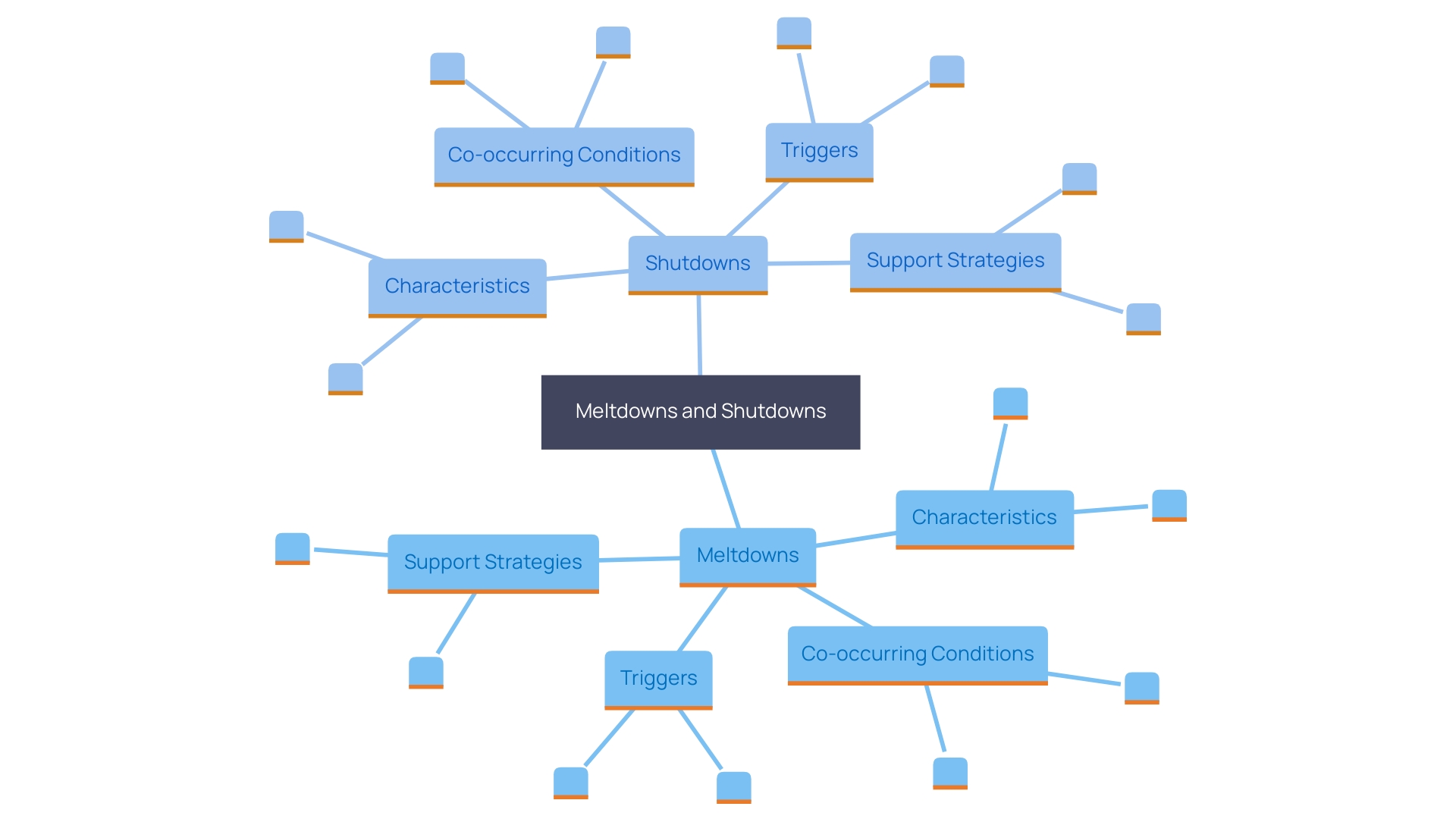Introduction
Autism Spectrum Disorder (ASD) is a multifaceted condition characterized by a range of features that manifest uniquely in each individual. From social communication challenges to restricted and repetitive behaviors, understanding these key traits is essential for providing effective support and fostering the well-being of those on the spectrum. Early and precise diagnosis plays a crucial role in tailoring interventions and promoting development.
This article delves into the core aspects of autism, offering insights into social communication hurdles, the significance of recognizing repetitive behaviors, and the importance of creating autism-friendly environments. By addressing these elements, parents and advocates can empower autistic individuals to navigate their world more comfortably and confidently, ensuring a higher quality of life.
Key Features of Autism
Autism Spectrum Disorder (ASD) is characterized by a diverse range of features that can significantly vary from one individual to another. Based on the DSM-5 criteria, key indicators of ASD include difficulties in interpersonal interaction, distinct behavioral patterns, and unique sensory sensitivities. The core features are typically observable in early childhood, though they may become more apparent as community demands increase.
Diagnosing ASD involves a comprehensive evaluation, often combining caregivers' observations with professional assessments. The National Institute of Child Health and Human Development (NICHD) outlines specific behaviors in categories such as interaction and repetitive actions, which are crucial for an accurate diagnosis.
Research, including that supported by a $2 million NIH grant, continues to explore the genetic and neural underpinnings of ASD, aiming to understand how different genetic factors may lead to similar neurological outcomes. This complexity underscores the importance of early and precise diagnosis to provide tailored support and interventions for individuals on the spectrum, fostering their development and well-being.

Social Communication Challenges
Individuals with autism often face considerable challenges in interpersonal interactions. These challenges can include difficulties in understanding nonverbal cues, maintaining conversations, or interpreting interpersonal contexts. Identifying these challenges is essential for parents and advocates, as it allows them to use strategies that promote better interaction and connection.
For example, early intervention programs designed for toddlers with autism, as emphasized by Dr. Hannah Schertz from Indiana University, concentrate on enhancing interpersonal interactions through parental mediation. This approach is essential because it addresses the core community difficulties early, promoting better long-term outcomes.
Furthermore, innovative research techniques are revealing new approaches to aid interaction. A recent study from the University of Virginia used a tablet-based game to reveal that many nonspeaking autistic people possess literacy skills, suggesting that written expression could open new educational, employment, and social opportunities for them.
The significance of comprehending and tackling these interaction challenges is further emphasized by the necessity for community-engaged research. This method guarantees that the views of autistic persons, caregivers, and professionals are incorporated in the creation of efficient interaction systems.
By utilizing these insights and strategies, parents and advocates can significantly improve the social communication skills of people on the spectrum, paving the way for more meaningful interactions and a higher quality of life.
Restricted and Repetitive Behaviors
Many autistic people engage in restricted and repetitive behaviors, such as repetitive movements, insistence on sameness, or an intense focus on specific interests. Recognizing these behaviors as integral to their identity rather than merely challenges can foster an environment that respects and supports their unique needs. As mentioned by researchers, modifying settings to better accommodate neurodivergent people, including those on the spectrum, is essential in assisting them in reaching their objectives.
For instance, the performance of daily activities like feeding and dressing can significantly improve when environments are tailored to a person's needs. Studies have shown that autistic children and adults often face higher levels of stress and reduced quality of life due to societal pressures to conform or mask their behaviors. This masking can lead to significant mental health issues, including anxiety and depression, as highlighted by the Autism Research publication.
Theresa Hamlin, president of The Center for Discovery, emphasizes the importance of understanding and predicting behaviors to mitigate their impact. By using advanced methods like AI and machine learning, it is possible to turn complex data into actionable insights, ultimately leading to better support strategies. This method corresponds with the primary objective of establishing nurturing settings that recognize and value the personal experiences of those on the spectrum.

Creating Autism-Friendly Environments
Establishing an autism-friendly setting is essential for promoting comfort and success for autistic people. This involves minimizing sensory overload, establishing structured routines, and ensuring spaces are calm and predictable. For example, Cork University Hospital in Ireland saw significant improvements when they tailored their patient experience to be autism-friendly. By reducing noise and providing clear, consistent information, they were able to complete imaging studies for children with autism more efficiently. As Martin Peyton, a clinical specialist at the hospital, noted, overstimulation can lead to distrust and stress, but an autism-friendly approach can alleviate these issues.
Likewise, the Autism Welcoming Initiative by the Autism Alliance of MetroWest trains businesses to be more accessible and inviting to autistic people. Pamela McKillop, co-director of the initiative, highlighted that families often hesitate to bring their autistic children into public spaces due to fear of judgment and unexpected noises. By certifying businesses as autism-welcoming, such as the Dave & Buster's location in Natick Mall, they help reduce anxiety and create a more inclusive environment.
Chris McDougle, director of Massachusetts General Hospital’s Lurie Center for Autism, emphasized the unpredictability and sensory overload that autistic people encounter daily. Structured environments with predictable routines can significantly reduce this anxiety, making interactions more manageable and less stressful. The combined efforts of hospitals, businesses, and initiatives like the Autism Welcoming Initiative demonstrate the positive impact of creating supportive, autism-friendly environments.
Understanding Meltdowns and Shutdowns
'Meltdowns and shutdowns represent distinct responses to overwhelming situations for people on the autism spectrum.'. A meltdown is generally characterized by an intense emotional reaction, often involving crying, yelling, or other outward displays of distress due to feelings of frustration or sensory overload. In contrast, a shutdown occurs when an individual withdraws from stimuli, retreating inwardly and becoming unresponsive as a means of coping with overwhelming stress.
Understanding these reactions is crucial for providing appropriate support. For instance, conditions like generalized anxiety disorder or social anxiety can exacerbate emotional turmoil, making meltdowns more frequent. Likewise, sensory sensitivities, such as those experienced by proprioceptive seekers who require deep pressure to feel calm, can lead to either meltdowns or shutdowns depending on the situation.
Research highlights the co-occurrence of this condition and other neurodevelopmental issues, which can further complicate these responses. For instance, children with both developmental disorders and ADHD may display more intense behaviors, necessitating customized interventions. Emerging tools, like mHealth applications and eye-tracking diagnostics, are paving the way for better understanding and managing these complex behaviors.
By recognizing the unique triggers and manifestations of meltdowns and shutdowns, parents and caregivers can develop strategies that include creating sensory-friendly environments, using therapeutic services, and employing communication aids. This comprehensive approach helps in mitigating these responses and supporting the overall well-being of individuals with autism.

Conclusion
Understanding Autism Spectrum Disorder (ASD) involves recognizing its diverse features, including social communication challenges, restricted and repetitive behaviors, and the significance of creating supportive environments. Each of these aspects plays a critical role in the lives of autistic individuals, influencing their interactions and overall quality of life. Early and accurate diagnosis is essential, as it allows for tailored interventions that can significantly enhance development and well-being.
Social communication hurdles often present significant obstacles for individuals with autism. By implementing targeted strategies and early intervention programs, parents and advocates can foster improved communication skills, leading to more meaningful interactions. The importance of community engagement in research further emphasizes the need for solutions that resonate with the lived experiences of autistic individuals and their families.
Recognizing restricted and repetitive behaviors as integral aspects of identity rather than mere challenges can create a more inclusive environment. Adapting surroundings to accommodate these behaviors can alleviate stress and improve daily functioning. The emphasis on understanding and predicting these behaviors is crucial for developing effective support strategies that honor individual experiences.
Creating autism-friendly environments is paramount for promoting comfort and reducing anxiety. By minimizing sensory overload and ensuring predictable routines, public spaces and institutions can become more accessible. Initiatives that train businesses to be autism-welcoming highlight the collective effort needed to foster inclusivity and support for autistic individuals and their families.
In summary, empowering parents and advocates with knowledge and resources is vital for navigating the complexities of autism. By understanding the key features of ASD and advocating for supportive environments, a brighter future can be cultivated for autistic individuals, enabling them to thrive in their communities.




